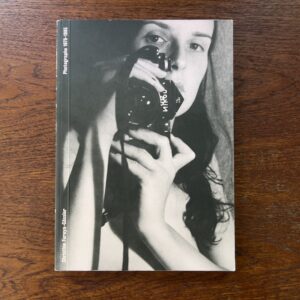JTF (just the facts): A total of 6 multi-image works, framed in white/black and unmatted, and hung against white walls in the two room gallery space. All of the works are ultrachrome ink prints on cotton paper, ranging from 2 to 12 panels, made between 2011 and 2013. Individual panels range in size from 24×24 to 61×44 (or reverse), and each work is available in an edition of 5. A new monograph of the artist’s work was recently published by Hatje Cantz (here). (Installation shots below.)
Comments/Context: Barbara Probst’s current show finds her leveraging her signature photographic simultaneity in multiple directions, applying the complexity of her multi-camera vision to several new genres. Each of the six works on view is remarkably different, each an exercise in breaking down photographic seeing and undermining the idea that any one photograph can represent the complete set of available information. Conceptually, it is one of the smartest shows I’ve seen this year.
While none of Probst’s works can be considered simple, the most straightforward of the works on view is a studio portrait of a man and woman, surrounded by an array of household cleaning products. In the left image, the man looks straight into the lens, while the woman seems to be looking off camera to the right; in the right image, the woman stares directly into the camera, while the man looks off to the left. They are two versions of the same scene, with just the slightest variation in eye position (and the spatial placement of the jugs of detergent in the foreground) to explain the change in perspective. It’s an excellent introduction to Probst’s photographic world: there is no one “right” view of any reality, in fact, there are many views which are equally “right”, upending our notion that a photograph is somehow documenting the “truth”. In this particular work, Probst makes her point with the minimum of fuss.
Other works expand these ideas in more dramatic ways, from the pairing of a studio self portrait that combines an up close leg (in color) with a steeply downward view from above (in black and white) to a three part cityscape where a woman crossing the street is seen with three entirely different backgrounds of architecture. An image from Michelangelo Antonioni’s Blow-Up taped to the artist’s studio wall adds another layer of misdirection – a woman looks at the poster of the fashion photographer from the film (in color), while simultaneously being photographed by Probst (in black and white) from another angle; this creates a feeling of being twisted around, and of trying in vain to piece together the pieces of a three dimensional spatial puzzle. Even a still life can be disorienting in her hands; a pair of earthenware pots and pitchers sits atop a glass front cabinet – from one perspective, we see reflected snowy trees, from another, a floating bubble and a skull image (a classic still life component) taped to the wall, and from a third, dust balls on top of the cabinet and lovely shadows cast on the wall by the vessels and the bubble – these scenes are so different that it’s hard to reconcile that they are all versions of the same physical reality.
Probst goes all-in with the largest work on display, a rowdy twelve part fragmented narrative that combines a half eaten apple on a table in an apartment, a woman looking out the window of that apartment, and a taxi down in the street below. Different angles pile up: one side of the apple (looking red and pristine), the other side (looking eaten), hands reaching for the apple from various directions, the woman in the apartment (from above), the view out the window with the taxi in the distance (looking down), and the taxi both going and coming in the intersection, all in a mix of color and black and white. Her work forced my brain to try and build some kind of mental map correlating all these views, leading me to wonder about her idea taken to its limit, with thousands of potentially different views of any given scene and the dizzying complexity of that kind of vision.
While Probst’s work is undeniably photography about photography, it finds a way to avoid the many traps of its airless, so clever it’s achingly dull brethren. Her innovation starts with a refined process (the simultaneous shutters of her radio controlled cameras), but it is her eye for composition that ultimately gives these works their vitality. Her exacting framing pulls the component images to their extremes, making the contrasts more unexpected when the multi-image sets are reassembled. After seeing these works, it’s hard not to come away with an altered mind set, seeing the pictures behind the pictures, the angles that weren’t ever documented but were just as valid as the ones we can remember. Her composite vision is at once impossible and all too real.
Collector’s POV: The works in this show range in price from $10000 to $70000, roughly based on size/number of panels. Probst’s work has very little secondary market history; the few lots that have come up for sale in recent years have ranged in price from roughly $4000 to $14000.










